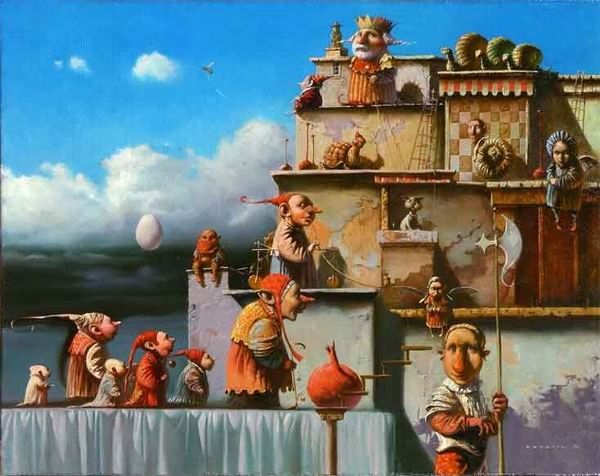
Chess Life of Finland
I have developed a habit of doing chess art of a particular country on Twitter. So far I have covered Poland, Ukraine, Switzerland, and the other day, Finland. That is why you see Roarrie under the Finnish flag today. You also see that Roaring Pawn has become more aggressive lately and is now not only roaring at the opponents, but also punching them hard (sotilas, by the way, means pawn in Finnish).

Typically, I choose a smaller country. For example, England, or Russia, have thousands and thousands of pieces of chess art. So why not give a chance to a small country to show off itself? The unhappy fate of small nations prevents their genius to get recognized.
"It is not hard for a lion to come forth from a spacious bush
The nest of genius is built only among greater nations." Njegos of Montenegro, 1846.
Still small nations have made a major contribution to the world's civilization in all domains. Their bad fate is that rich nations buy their smartest and most capable people, scientists, artists, sportsmen, etc. and use them for their own benefit.
Okay, so this going to be a collage of pieces of art from Finland, but also about everything that is connected to our beloved game and chess life there.
You are going to meet some of their poets, politicians, sportsmen, and ordinary people playing chess at home, or at work; you are also going to see the games of some most prominent players of the country; their chess magazine; chess clubs; chess sets; the connection between chess and their most popular sport - ice hockey, etc. So hopefully you will enjoy your trip to Finland.
But before we sail off on our chess journey, I want to express my deepest gratitude to Neil Blackburn aka @simaginfan here on the site. His was the choice of all players and the games presented, as well as all historic material. He was sort of collaborator on the entire project. He is such a chess scholar and historian, yet always ready to give a hand chesswise and otherwise. Thanks mate.
Chess Life in Suomi
So I start off with a nice piece by Tuuli Mäenpää, a graphic designer from Finland, titled Playing chess. I just add some text to it, 'Tragicomedy that unfolds in every game of chess.'

Next, I put few photos of Finnish people playing chess in various situations at work and home. Particularly, the first one received much of attention and a greater number of views than an average tweet of mine.



.
Below is Kari Tapani Rahkamo, a Finnish athlete, politician, and Mayor of Helsinki from 1991–1996. He competed in the men's triple jump at the 1956 and 1960 Olympics for Finland.

.
Eino Leino was a Finnish poet and journalist. He is considered one of the pioneers of Finnish poetry, being able to fuse the Finnish folk into art poetry.
This is G. Nyholm's drawing from 1921 of the chess player Eino Leino.

.
Now it was time to look at some paintings the Finns have done.
First, Gunnar Berndtson (1854-1895), who was noted for his attention to realistic detail. Like here in this painting, titled Sakkia.


.
Shakinpelaajat (Chess players, 1910) by Onni Muusari (1890 - 1917) a skilled illustrator of fairy tale worlds and portraits. A promising career of an artist was interrupted too early, at just 27 years old.

.
Pekka Halonen (1865 - 1933), The Chess players, 1909.
Halonen's father was himself an amateur artist who not only ran the farm, but also worked as a decorative painter on commissions from churches. Halonen often accompanied him on these trips and thus was introduced into painting.

.
After the old masters, let us turn to some modern, Eeva Peura (1982), Sunday.
"I paint with thick oil paints and squirt the paint straight from the tube onto canvas. The result is often sticky and clumsy.
“Like painting some ordinary things; serious people absorbed in chess or a book club, boxers and the door of a cinema."

.
Tenho Olavi “Olli” Lyytikäinen (1949, Heinävesi - 1987, Helsinki) was a Finnish self-taught pop artist. Shakki (Chess), 1976

.
Greta Hällfors-Sipilä (1899 - 1974) a Finnish painter that participated enthusiastically in the new trends which reached Finland's art scene in the early 20th c., embracing Impressionism, Functionalism and Cubism
Here Chess game (Jussi Hirvola), 1918, in Ateneum Art Museum, Helsinki.

.
Olli Marttila (1948 -), Untitled 2014
"A word to tell about Olli Marttila’s art could be a touch. How the artist touches the paper with color and how the painting touches the viewer." - Kimmo Sarje, 1998
Born in Jalasjärvi in 1948, Olli Marttila's road has passed through Oulu, Helsinki, Ylivieska, Kuhmo, Vaasa and Laihia to Orivesi. On this journey, he did not become an architect, poet, potter, farmer, or visual arts teacher, but a visual artist.

.
At this point let us take a look at some pieces of, erm chess art at the board.
Westerinen, Heikki Westerinen, the Finnish chess legend!
He had a late debut on the world stage when played for Finland at the 1968 student Olympics and had the best score on board 1. As the 1962 Finnish champion, Heikki got into the Olympic team for which he played for 44 years.
At the 1966 Wijk aan Zee the Finn won the IM title. He was given an incredible honor at that time - he was invited to the USSR for a super tournament for the 50th anniversary of the October Revolution. Westerinen played against the best chess players of the world and scored 7/15 with wins over Gufeld and Szabo.
In 1967, Heikki almost reached the Interzonal, he was only a little behind in the presence of Portisch, Hort, Matulovich and Uhlman. Heikki’s successes were growing: Uppsala (1969) - 1; Wijk aan Zee (secondary, 1969) - 1-2; Olot (1970) - 1; Berlin (1971) - 3; Oslo (1971) - 2, (1973) - 2-3, (1974) - 2; Sant Feliu and Cap Picafort (1973) - 1; Stockholm (1974 and 1974/1975) - 1-5 and 1-2; Bucharest (1974) - 3.
Surprisingly, initially Westerinen was not a professional; he worked at a school as a math teacher.
Sosonko told a story about how at about that time TDs were very strict and critisized players for talking during play, for example (the Dutch players were known for it). One night, at the hotel bar, Heikki was carefully listening to the instructions of an experienced GM about the need to observe a strict regime during the tournament. After he finished, Westerinen replied: “I respect your point of view, colleague, but for now: “Waiter! Another glass of beer! ”

Westerinen earned his GM title at Dortmund 1975 with a glorious victory 9.5/11. Savon and Kupreichik remained behind.
He is currently one of the players with most games having played in tournaments; he ranks high after Korchnoi, Farago, Karpov, Ivanchuk, van Wely, Timman.
Here are two games of Heikki. The first one, that we may call 'Wold, Wild, West', was against GM Sigurjonsson of Iceland, New York 1977.

.
The next is played against Jan Timman, Tallin, 1973. A sacrifice at the same square - g7. But this time it was a rook to give itself on the pedestal of Heikki's glory.

.
We all know of GM Westerinen. But there have been other fine Finnish players. Bo Nyrén, for example, was one of the most talented players of Suomi; sadly, he gave up active play too early.
Look what he did to Larsen (White), Birmingham, 1951, at the first World Junior Championship where Borislav Bora Ivkov of Serbia, then Yugoslavia, triumphed.

.
In this photo taken at the Nordic Junior Tournament in Trondheim, Bo Nirén is front left. (source: Norsk Sjakkblad, Feb 1952)
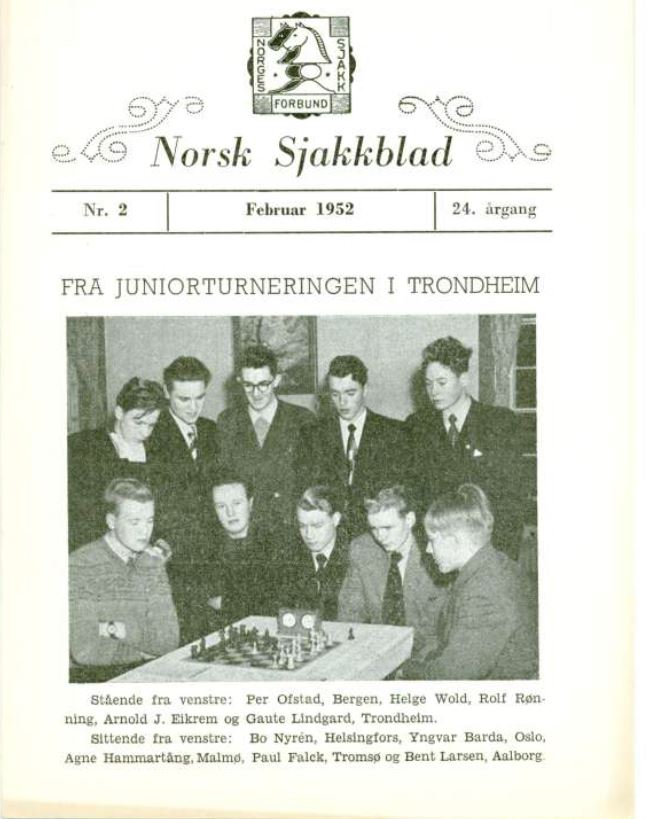
.
Now, here is the team that represented Finland at the first Chess Olympiad in London in 1927.
1. Edgar Lindroos (1900 - 1974)
2. Anatol Tchepurnoff (1871 - 1942, Russian-Finnish)
3. Eino Heilimo (1887 - 1974)

.
A nice chess set follows from the "Land of a thousand lakes;" actually, at last count there were 187,888 of them - more lakes in relation to a country's size than any other. Indeed, with a population of about five million and a half, Finland has one lake for every 29 people.
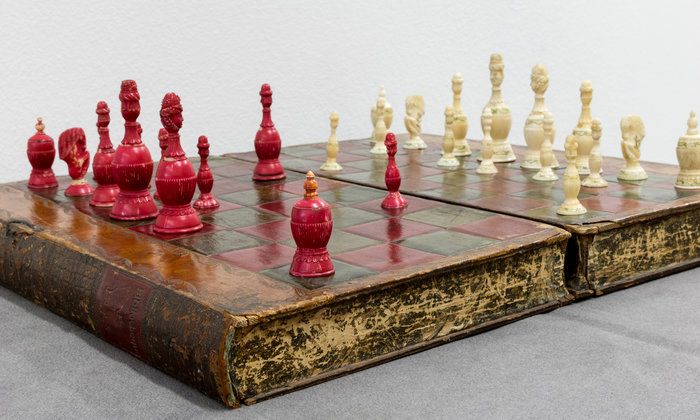
.
Shakki ja matt! or, for all of you who don't speak the language of the Finns - check and mate!
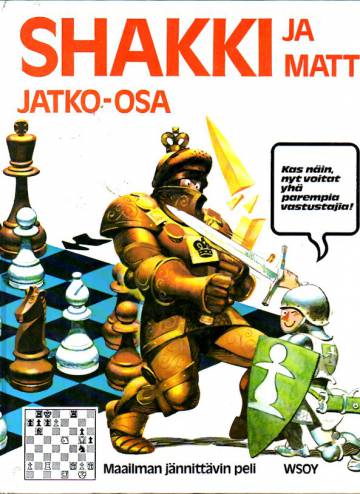
.
"Oulu-based chess talent Qiyu Zhou has won the second place medal in the Chess Youth World Championship for girls U8."
That was the news in 2006. Meanwhile Qiyu Zhou (b. 2000) moved to Canada and is now holding the titles of men's FM and WGM.


.
Zhou was born in Jingzhou, China; she learned to play chess at the age of four in France. In 2004, she moved to Finland, and in 2011 to Canada.
So I add this piece of art art by Agne Mikalauskiene, titled The Traveler as appropriate one for Zhou (Agne is a young versatile painter and doll artist from Lithuania).


.
Birger Axel Rasmusson (1901 – 1964) was another good Finnish player; from the late 1920s to the late 1930s he was one of Finland's leading chess players; the Finnish champ in 1933.
Rasmusson is known for his victory over Paul Keres (White) at the 1935 Warsaw Chess Olympiad.

.
Eero Einar Böök (1910–1990) was an engineer and a great player from Finland. A five-time champion who represented his country six times in Olympiads; IM title 1950; honorary GM 1984.
He beat Euwe (White) at the Dubrovnik Olympiad, 1950 (it used to be, now non-existent country Roaring Pawn was born in - Yugoslavia).

.
At a young age, Kauko Virtanen wondered whether he would become a teacher, or a poet. Teaching took victory (he made his career as a math lecturer), and poetry remained a hobby
Another dear hobby of his is chess; he composed 120 chess problems and was editor of Suomen Kuvalehti, a weekly Finnish language family and news magazine published in Helsinki.

.
Ice hockey is the most popular sport in Finland. No wonder then the Finns have invented the Ice Hockey Chess.
On this game box there are three Finnish hockey legends (from L) Jukka Porvari, Veli-Pekka Ketola and Juhani Tamminen.

.
Suomen Shakki has been a chess magazine from Finland since 1926. Below is a cover from a 2011 copy. If you want to sample the content, here is the link.
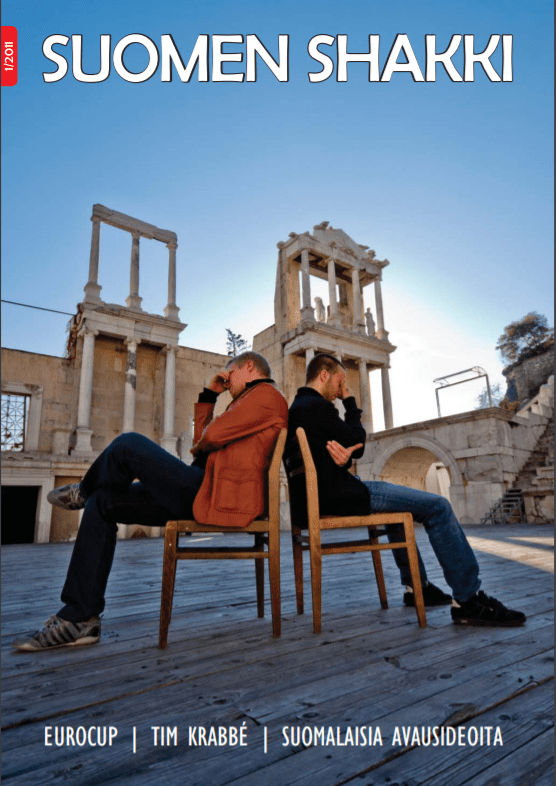

Here are few more samples of Suomen Shakki chess magazine
http://suomenshakki.fi/SSH7_2009.pdf
http://suomenshakki.fi/SSH7_2010.pdf
http://suomenshakki.fi/SSH5_2011.pdf
http://suomenshakki.fi/SSH8_2011.pdf
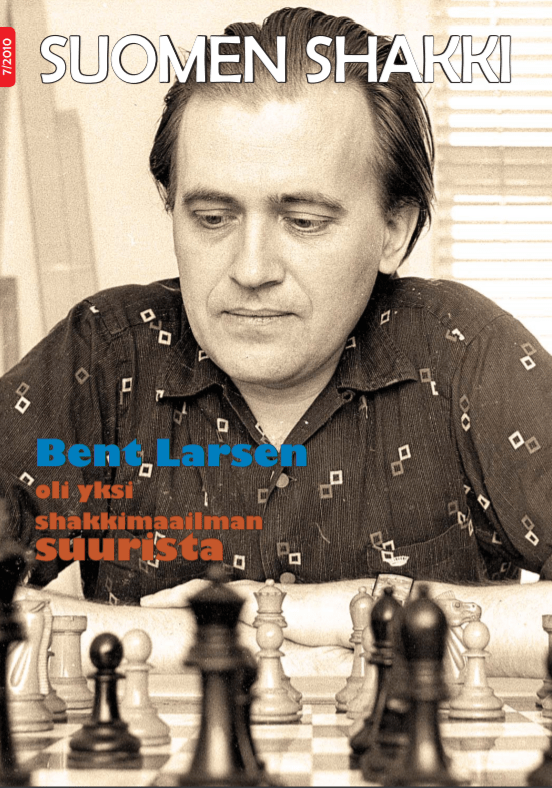
Here is another invaluable contribution of Neil Blackburn aka @simaginfan that I am immensely grateful for.
"Westerinen was one of pioneers of what is (incorrectly) known as the Saemisch-Panno KID. He even wrote a small book about it entitled Nc6!?―see e.g.
https://bit.ly/2WXoHSA for an amusing story.
"Here is one of Westerinen's dynamic wins with his pet line against the strong American IM Anthony Saidy."

Helsinki's oldest chess club, the Helsinki Chess Club (since 1886), meets in Lapinlahti. The video tells about their activities.
.
The seven-year-old Vili Saksi was not at the chessboard for the first time. He tuned in a good game with Johanna Tan from Vammala Chess Club. Little sister Lyyti, 2, follows.

.
Museum Centre Vapriikki in Tampere has hosted an exhibition, part of a Russian-culture theme year in Tampere, displaying a large collection of porcelain, directly from the State Hermitage Museum in St Petersburg.
The exhibition of porcelain at Vapriikki reflected the changing times, aesthetics, and ideology after the 1917 Revolution, while also becoming an important propaganda weapon for those in power.
Among the exhibits were also some porcelain chess sets, just a piece of the Soviet propaganda machine.

 And that was it, my chess friends, for today. Hope you have liked a review of chess life in the land of a thousand lakes.
And that was it, my chess friends, for today. Hope you have liked a review of chess life in the land of a thousand lakes.
If you may have a suggestion for next Chess Art in XXX, please let me know. Basically, it should not be a big country, and, as I have explained above, we all know all too much about them already.

